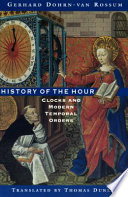 | Richard E. Chandler, Kessel Schwartz - Literary Criticism - 1991 - 460 pages
...Galician poetry dominated the peninsula from the twelfth to the fourteenth century. It was not until the end of the fourteenth and the beginning of the fifteenth century that the Castilians began to use their own language to compose lyric poetry. The Cancionero de Baena... | |
 | Massimo Livi-Bacci - History - 1991 - 174 pages
...variations in income, so that the increased purchasing power of a wide spectrum of consumers between the end of the fourteenth and the beginning of the fifteenth century was to reabsorb, to no negligible extent, a reduced demand due to the contraction in the number of... | |
 | Pieter Cornelis Verhagen, Johannes Bronkhorst - Buddhist literature, Sanskrit - 2001 - 476 pages
...9r4. Investigation of the Sanskrit original of the Prakriya-kaumudi^ which is generally dated at about the end of the fourteenth and the beginning of the fifteenth century, has shown that this is indeed the source of the exposé translated by Si-tu. At the very end of the... | |
 | Jacques Gernet - History - 1996 - 836 pages
...Economic Changes The epoch that followed the great period of expansion of the Hung-wu and Yung-le eras at the end of the fourteenth and the beginning of the fifteenth century was marked on the one hand by a strengthening of the tendencies to secret, autocratic government which... | |
 | Wolfgang Reinhard - History - 1996 - 344 pages
...states or republics implied a growth of more complex structures and institutions.1" Almost everywhere at the end of the fourteenth and the beginning of the fifteenth century, an efficient articulated bureaucratic system emerged populated with professional office-holders such... | |
 | Rosalynn Voaden - History - 1996 - 220 pages
...S. Domenico in Pisa, the painting has been attributed to Bernardo Falconi and has been dated between the end of the fourteenth and the beginning of the fifteenth century. E. Carli, // Museo di Pisa (Pisa, 1974), reproduces the altarpiece, plate XIX. The panel in Pisa is... | |
 | Gerhard Dohrn-van Rossum - History - 1996 - 468 pages
...only of transportable but of truly portable clocks.210 The first references, still vague, take us to the end of the fourteenth and the beginning of the fifteenth century. A biography of the builder of the cathedral cupola in Florence, Filippo Brunelleschi (1377-1446), reports... | |
 | Antoon Geels - Body, Mind & Spirit - 1997 - 280 pages
...this kingdom there developed an aristocratic elite, mostly consisting of Hindus or Buddhists. Towards the end of the fourteenth and the beginning of the fifteenth century, the influence of Majapahit decreased considerably. Instead there was an increase in the influence of another... | |
 | Georges B. J. Dreyfus - Philosophy - 1997 - 656 pages
...attempting to reconcile the rising Treasure with the accepted views of Cha-ba's tradition." Therefore, at the end of the fourteenth and the beginning of the fifteenth centuries, a conflict of interpretations opposed the partisans of Tibetan realism to those who followed... | |
 | Nina Witoszek, Patrick F. Sheeran - Death - 1998 - 194 pages
...geography and politics and of the gap that opened between names and their referents is to be found at the end of the fourteenth and the beginning of the fifteenth century. Scholarly tradition continues to describe two lengthy versified tracts, one by Se"an M6r 6 Dubhagain... | |
| |